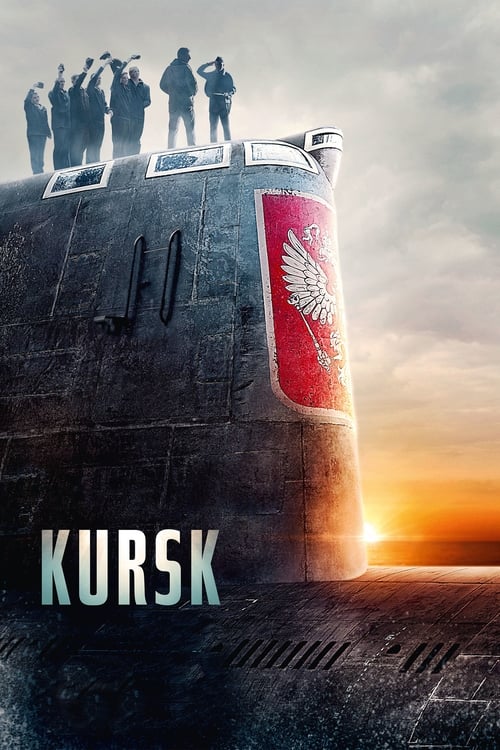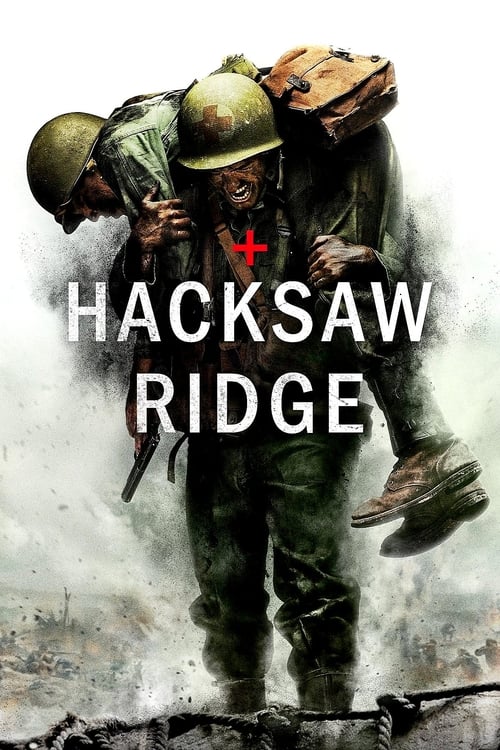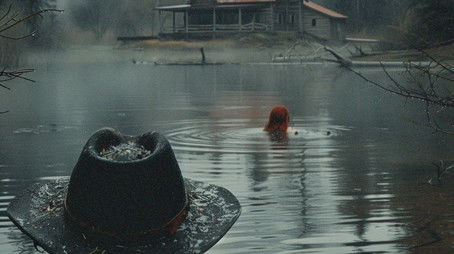
Ask Your Own Question
What is the plot?
In the film "Kursk," we begin with a serene scene beneath the waves of the Barents Sea, where the Russian submarine K-141 Kursk is preparing for a naval exercise. The camera glides through the water, capturing the beauty and tranquility of the ocean, contrasting sharply with the impending tragedy. Inside the submarine, the crew is lively and engaged, showcasing camaraderie and a sense of duty. We see the men joking, sharing stories, and bonding over their shared mission, establishing their personalities and relationships.
As the submarine dives deeper, the atmosphere shifts. The crew members are focused, their expressions serious as they conduct drills. The tension builds as we witness the intricate workings of the submarine, the machinery humming and the crew operating in unison. Suddenly, a loud explosion reverberates through the vessel, shaking the very core of the Kursk. Panic ensues as alarms blare, and the crew scrambles to assess the damage. The once lively atmosphere is replaced by chaos and fear.
In the aftermath of the explosion, we see the crew struggling to comprehend the situation. Water floods in, and the lights flicker ominously. The camera captures the desperation on their faces as they attempt to communicate with the surface, but their efforts are met with silence. The audience feels the weight of their isolation, the claustrophobia of the submarine closing in around them.
Meanwhile, on the surface, the Russian Navy is alerted to the disaster. We shift to the command center, where high-ranking officials are portrayed as they grapple with the implications of the incident. The tension is palpable as they debate the best course of action, revealing the bureaucratic challenges that will hinder the rescue efforts. The audience witnesses the stark contrast between the urgency of the situation and the slow, methodical response from those in power.
Back in the submarine, the crew members are shown in their struggle for survival. They attempt to ration their limited supplies, and we see the emotional toll the situation takes on them. The camera lingers on their faces, capturing moments of despair, hope, and determination. One character, the submarine's captain, emerges as a leader, rallying his men and instilling a sense of hope amidst the dire circumstances. His resolve becomes a beacon for the crew, and we see their spirits lift, if only momentarily.
As days pass, the rescue efforts on the surface become increasingly frantic. We see the arrival of foreign vessels, including a British rescue team, eager to assist. The tension escalates as the Russian officials grapple with pride and the need for help. The audience feels the urgency of time slipping away, as the crew's oxygen supply dwindles and their hope begins to fade.
In a poignant scene, the camera captures the crew members sharing their thoughts and fears, revealing their humanity. They reflect on their lives, their families, and the dreams they hold dear. The emotional weight of their situation is palpable, and the audience is drawn into their plight, feeling their desperation and longing for rescue.
As the rescue operation unfolds, we witness the challenges faced by the divers as they attempt to reach the Kursk. The underwater scenes are tense and fraught with danger, showcasing the risks involved in the rescue mission. The audience holds its breath as the divers navigate the dark, cold waters, their lights piercing through the murky depths.
In the climax of the film, the rescue team finally reaches the Kursk, but the reality of the situation becomes painfully clear. The crew's fate is revealed, and the audience is left with a profound sense of loss. The camera captures the somber expressions of the rescuers as they grapple with the tragedy that has unfolded.
The film concludes with a haunting scene, as the families of the crew members gather, their faces etched with grief. The camera pans over the memorials, capturing the collective sorrow of a nation mourning its lost heroes. The final moments linger on the faces of the loved ones, a poignant reminder of the human cost of the disaster.
"Kursk" leaves the audience with a visceral understanding of the tragedy, the bravery of the crew, and the complexities of the rescue efforts, encapsulating a moment in history that resonates deeply.
What is the ending?
In the ending of the movie "Kursk," the crew members of the submarine face a tragic fate as their attempts to survive the disaster are met with insurmountable challenges. The rescue efforts from the Russian government are slow and ineffective, leading to a heartbreaking conclusion for the trapped sailors.
As the film approaches its climax, the scene shifts to the interior of the Kursk submarine, where the crew is grappling with the aftermath of the catastrophic explosion. The atmosphere is thick with tension and despair. The men, once filled with camaraderie and purpose, now find themselves in a fight for survival. They gather in the dimly lit control room, their faces illuminated by the flickering emergency lights. The sound of water rushing in creates a haunting backdrop as they realize the gravity of their situation.
In a series of poignant moments, the crew members share their fears and hopes. They reminisce about their families, their lives above the surface, and the dreams they had before the disaster struck. The camera captures close-ups of their expressions, revealing a mix of determination and resignation. As they attempt to communicate with the surface, their voices echo in the confined space, filled with desperation as they send out distress signals, hoping for a response.
Meanwhile, on the surface, the Russian Navy is depicted in a state of confusion and bureaucratic delay. The high-ranking officials are shown in meetings, debating the best course of action. The contrast between the urgency of the trapped sailors and the slow-moving response from the authorities creates a palpable tension. The audience witnesses the frustration of the families waiting for news, their faces etched with worry and fear.
As days pass, the crew's situation becomes increasingly dire. The oxygen levels drop, and the men are forced to confront the reality of their impending fate. In a heart-wrenching scene, they gather for a final toast, sharing their last moments together. The camaraderie that once defined them is now tinged with sorrow, as they acknowledge the possibility that they may not make it out alive.
In a parallel narrative, the rescue efforts are depicted as increasingly futile. The Russian government's attempts to mobilize resources are met with obstacles, and the international community's offers of assistance are initially rebuffed. The film highlights the disconnect between the men trapped below and the decision-makers above, emphasizing the tragic consequences of bureaucracy in times of crisis.
As the final moments unfold, the audience is taken back to the submarine, where the crew's hope begins to fade. The camera lingers on their faces, capturing the raw emotion of acceptance as they realize that rescue may never come. The sound of water continues to rise, and the lights flicker ominously. The film closes with a haunting silence, leaving the fate of the crew ambiguous but heavy with the weight of loss.
In the final scenes, the focus shifts to the aftermath of the disaster. The families of the crew are shown grappling with their grief, and the film ends on a somber note, underscoring the human cost of the tragedy. The screen fades to black, leaving the audience to reflect on the lives lost and the failures of those in power to act in time. The credits roll, accompanied by a haunting score that echoes the emotional weight of the story.
Is there a post-credit scene?
In the movie "Kursk," produced in 2018, there is no post-credit scene. The film concludes with a poignant ending that encapsulates the tragedy of the submarine disaster and the struggles faced by the crew and their families. The final moments focus on the emotional weight of the events, leaving the audience with a sense of reflection rather than a continuation of the story. The credits roll without any additional scenes or content following them.
What events lead to the sinking of the Kursk submarine?
The Kursk submarine is conducting a naval exercise in the Barents Sea when a series of explosions occur, leading to its sinking. The crew is shown preparing for the exercise, and the tension builds as they face technical difficulties.
How does the crew of the Kursk respond after the submarine sinks?
After the sinking, the film depicts the crew's struggle for survival inside the submarine. They attempt to communicate with the outside world and ration their supplies while dealing with the dire situation.
What role does the character Mikhail Averin play in the story?
Mikhail Averin is portrayed as a dedicated and skilled submariner. His character is central to the narrative, showcasing his leadership and the emotional toll of the disaster on him and his fellow crew members.
How do the families of the crew react to the news of the Kursk disaster?
The film illustrates the anguish and desperation of the families as they receive the news of the disaster. They gather at a naval base, anxiously waiting for updates and grappling with the uncertainty of their loved ones' fate.
What actions do the Russian government take in response to the sinking of the Kursk?
The film depicts the Russian government's response as slow and bureaucratic. Officials are shown debating the best course of action, while the families and the public express frustration over the lack of immediate rescue efforts.
Is this family friendly?
In the movie "Kursk," produced in 2018, there are several scenes that may be considered objectionable or upsetting for children or sensitive viewers.
The film opens with a depiction of the crew aboard the submarine, showcasing their camaraderie and the intense environment of military life. However, as the story progresses, viewers witness the harrowing moments following the submarine's tragic accident.
Scenes include:
-
Submarine Accident: The film portrays the catastrophic explosion that occurs within the submarine, which is intense and may be distressing. The chaos and panic among the crew members as they try to comprehend the situation can be unsettling.
-
Struggle for Survival: There are sequences that depict the crew's desperate attempts to survive in the submerged submarine. The claustrophobic environment and the tension of dwindling oxygen levels create a sense of urgency and fear.
-
Emotional Distress: The film includes scenes of family members waiting for news about their loved ones. The emotional weight of their anxiety and grief is palpable, which may be upsetting for viewers, especially children.
-
Rescue Attempts: The portrayal of the rescue operations is fraught with tension and frustration. The scenes show the challenges faced by rescuers and the limitations of their efforts, which can evoke feelings of helplessness.
-
Loss and Mourning: There are moments that reflect on the loss of life and the impact on families, which can be quite heavy and emotional.
Overall, while "Kursk" is a gripping narrative about a real-life tragedy, its intense themes and scenes may not be suitable for younger audiences or those who are sensitive to depictions of disaster and loss.

























































